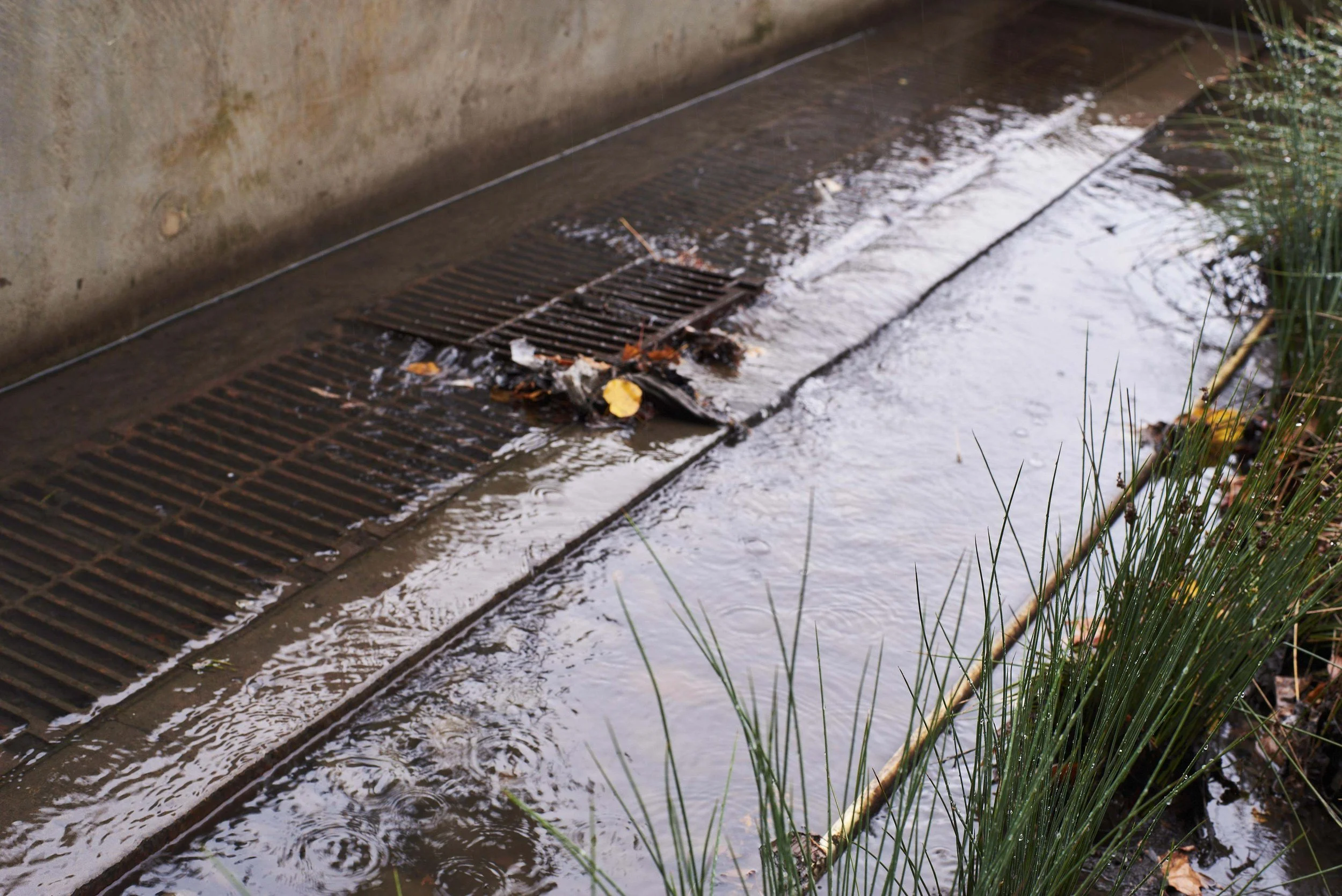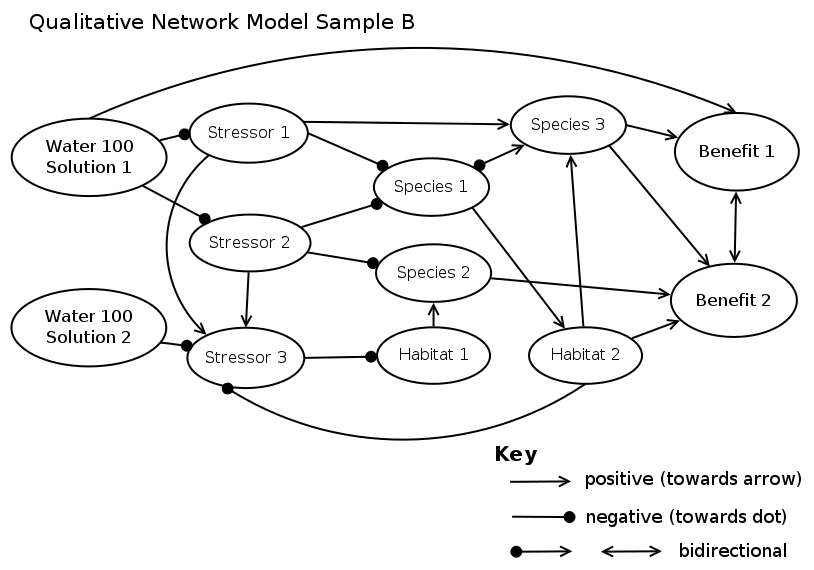By Caitlin Magel, research scientist at UW-Tacoma's Puget Sound Institute
Catalyzing Innovation in Stormwater Solutions
The iconic rain of the Puget Sound region creates problems when it hits the streets and other impervious surfaces that characterize this highly developed urban landscape. The resulting stormwater runoff carries toxic contaminants into nearby waterways, degrades habitat and water quality, and causes flooding, touching nearly all facets of the coupled human and natural system.
In 2019, the Water 100 Project kicked off an effort to identify, assess, fund, and implement the 100 most substantive solutions for improving system conditions, benefiting humans and nature in ways that extend well beyond stormwater pollution. Researchers at the University of Washington and The Nature Conservancy are taking this work a step further, exploring innovative tools to galvanize high-impact stormwater solutions and address prioritization challenges including project placement, equitable impacts, and limited data availability.
This article is the first installment in a three-part series describing the methodologies utilized by three UW research teams and their thoughts on how these tools might benefit future conservation work.
Qualitative Network Model
In an urban setting, land uses such as industrial, residential, and transportation are associated with different stormwater contaminants, including toxicants (fossil fuels, plastics, pesticides, metals), bacteria, and nutrients. In addition to addressing contaminants, stormwater solutions benefit nearby communities by reducing human exposure to toxicants, improving air quality, reducing urban heat islands, and providing access to nature. The extent to which those benefits are realized depends on the surrounding environment - what the land is used for, what type of stormwater solution is put in place, and other local contexts such as community identity and economic or social vulnerabilities. To simultaneously achieve preferred outcomes for people, wildlife, and the environment, decision-making should be guided by these social, cultural, economic, and ecological factors but standard decision-making tools and models often overlook these important local contexts. Although quantitative tools – such as cost-benefit analyses and ecosystem models – may be preferable, they are slow to develop and require extensive data that is not available in many places. Therefore, decision support tools appropriate for complex, coupled human and natural systems remain underutilized. The challenge is identifying a tool that can bring together the complex web of environmental and human factors, which is pivotal for advancing more equitable stormwater projects and realizing the full suite of possible benefits.
What research tool was utilized or developed?
A team of researchers at the University of Washington and The Nature Conservancy identified a less time- and data-intensive tool called a qualitative network model (QNM), which can evaluate the full suite of possible benefits from stormwater solutions for Puget Sound. At its core, this tool is a conceptual model in which diverse components of the natural-human urban stormwater system are connected into a web (or network) by how they interact with one another via positive or negative relationships. These relationships are constructed using existing information from literature or expert judgment in its absence. Therefore, QNMs are well suited to systems where data isn’t available or when the relationships between system components are not well understood.
Example qualitative network model (QNM) of a system with four components (left) and the results of a positive perturbation of “W” (right).
The QNM helps us conceptualize the complex web but can also be used to simulate scenarios and show how components of the system interact. These interactions are created by applying “perturbations” and observing how the change propagates through the system. A perturbation is performed by increasing (via positive press perturbation) or decreasing (via negative press perturbation) one or more components in the model and observing how the other components respond in a qualitative sense – positive, negative, or neutral. Since this is a qualitative model, the results are interpreted as hypotheses that can then be verified with other approaches (e.g., in-situ monitoring, controlled experiments, or other modeling). If better information becomes available, QNMs can easily be updated and re-simulated. QNMs require less technical expertise to build and utilize than quantitative models, making them useful for effectively engaging stakeholders and quickly testing assumptions about system behavior.
Hypothetical qualitative network model (QNM) linking stormwater solutions to species, habitats, and outcomes of management interest.
How could the tool be applied? How might it benefit conservation work elsewhere?
The Puget Sound Social-Ecological Urban Stormwater QNM developed in this study provides the opportunity to refine understanding of the linkages between urban land uses, stormwater solutions, and community benefits without needing to conduct additional monitoring or experiments. The QNM was constructed using information contained in TNC products, including the 2019 Stormwater Report, the Water 100 Project, and other relevant publications. This research will advance understanding of the multiple benefits produced by different stormwater solutions, linking Water 100 solution-specific perturbations of the network to the positive impacts on benefits included in the model. It will explore the influence of local contexts on the delivery of benefits to communities by comparing those outcomes across multiple configurations of the network. This information can be used to help Puget Sound municipalities direct management and promote equitable green solutions to address urban stormwater.
Where can additional information about the tool be found?
The QNM approach was originally developed by Richard Levins and Charles Puccia in the 1970-80s. Since 2012, it has risen in popularity in ecological and social-ecological research following the noteworthy advancement of the method that allows users to include aspects of model uncertainty in the analysis. Regionally, researchers have used QNMs to investigate fisheries in the California Current marine ecosystem, ecosystem and anthropogenetic drivers of early marine survival of Pacific salmon, community impacts of ocean acidification in Willapa Bay, Washington, and community-wide responses to bivalve aquaculture in South Puget Sound. These examples highlight the diversity of potential applications of QNMs. Other similar qualitative or semi-quantitative approaches, including Fuzzy-Logic Cognitive Mapping and Bayesian Belief Networks, can also be used to build intuition and guide decisions when data is limited.
This research was conducted by Caitlin Magel (UW-Tacoma, Puget Sound Institute), Phil Levin (UW, The Nature Conservancy), and Tessa Francis (UW-Tacoma, Puget Sound Institute).
Connect with Caitlin Magel for further information about this work.
Featured image: Storm drain © Michael B. Maine/TNC






















